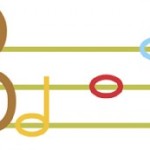
For example, when it comes to naming musical notes or reading sheet music, it is important to mention the difference in nomenclature between English and the more Latin-derived languages.
The English system of musical notation is an alphabet-based system. This has its origins in the Greek notation, which named notes from alpha to gamma. We now know this thanks to discoveries made of old compositions, such as ancient hymns and chants. The nomenclature was extended to the Romans and, consequently, to their British colonies.
In English the terms major (/ ma’joɾ /) and minor (/ mi’noɾ /) are derived directly from the Latin terms, which in Spanish are mayor and menor.
The comparative list of notes is as follows:
- Do ________ C
- Re ________ D
- Mi ________ E
- Fa ________ F
- Sol ________ G
- La ________ A
- Si ________ H
When faced with a translation containing such material, it is very important for the translator to spend some time finding appropriate and accurate information. In this way, he or she can convey a more accurate message that the reader will more likely appreciate.
To read the original Spanish post go to:
“Cómo traducir las notas musicales“





